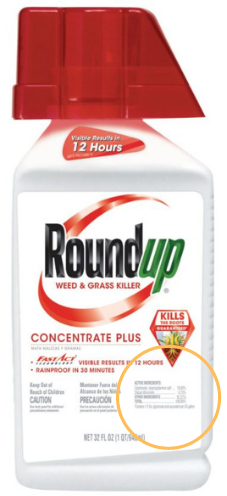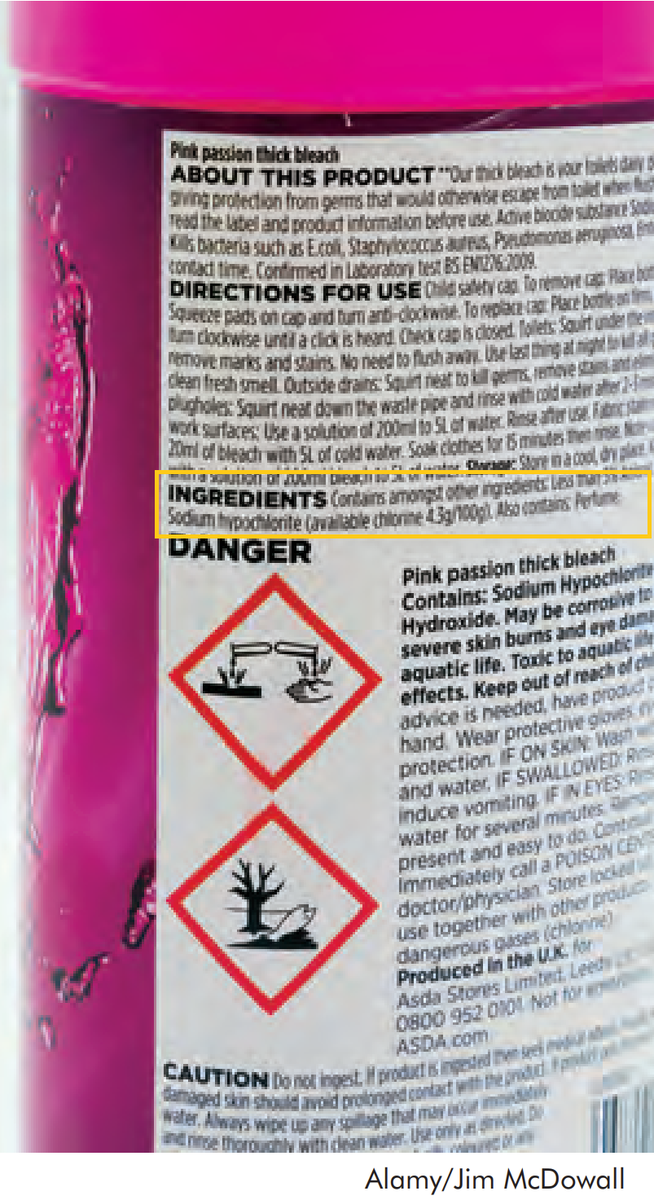Gateway on Pesticide Hazards and Safe Pest Management
How To Find Ingredients in Pesticide Products
Beyond Pesticides offers resources below to evaluate the health and ecological effects of specific chemical exposure from ACTIVE INGREDIENTS in pesticide products, as well as regulatory information and supporting scientific documents. Because various pesticide products can contain more than one active ingredient, it is important to READ the LABEL to determine chemical components.
With 192 different active ingredients and counting, it is essential to establish the connection between the use of these chemicals and their respective hazards.
View the step-by-step guide on how to search for the active ingredient(s) in pesticide products below:
- Go to U.S. EPA's Pesticide Product and Label System and enter the product name. The generic product name may vary.
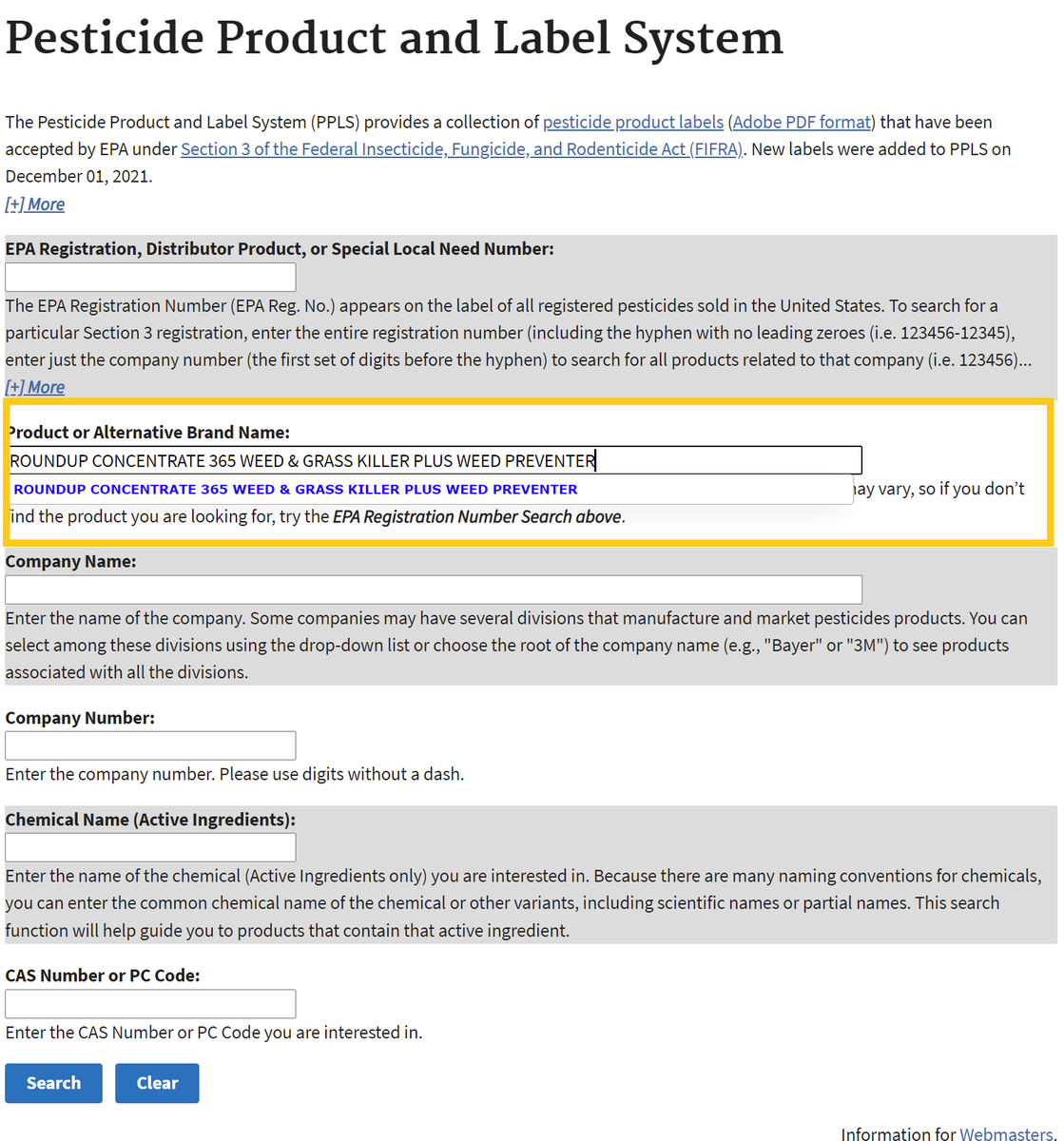
- After searching, click on the chemical ingredients tab or the link for the most recent label to find Active Ingredients.
Chemical List Label List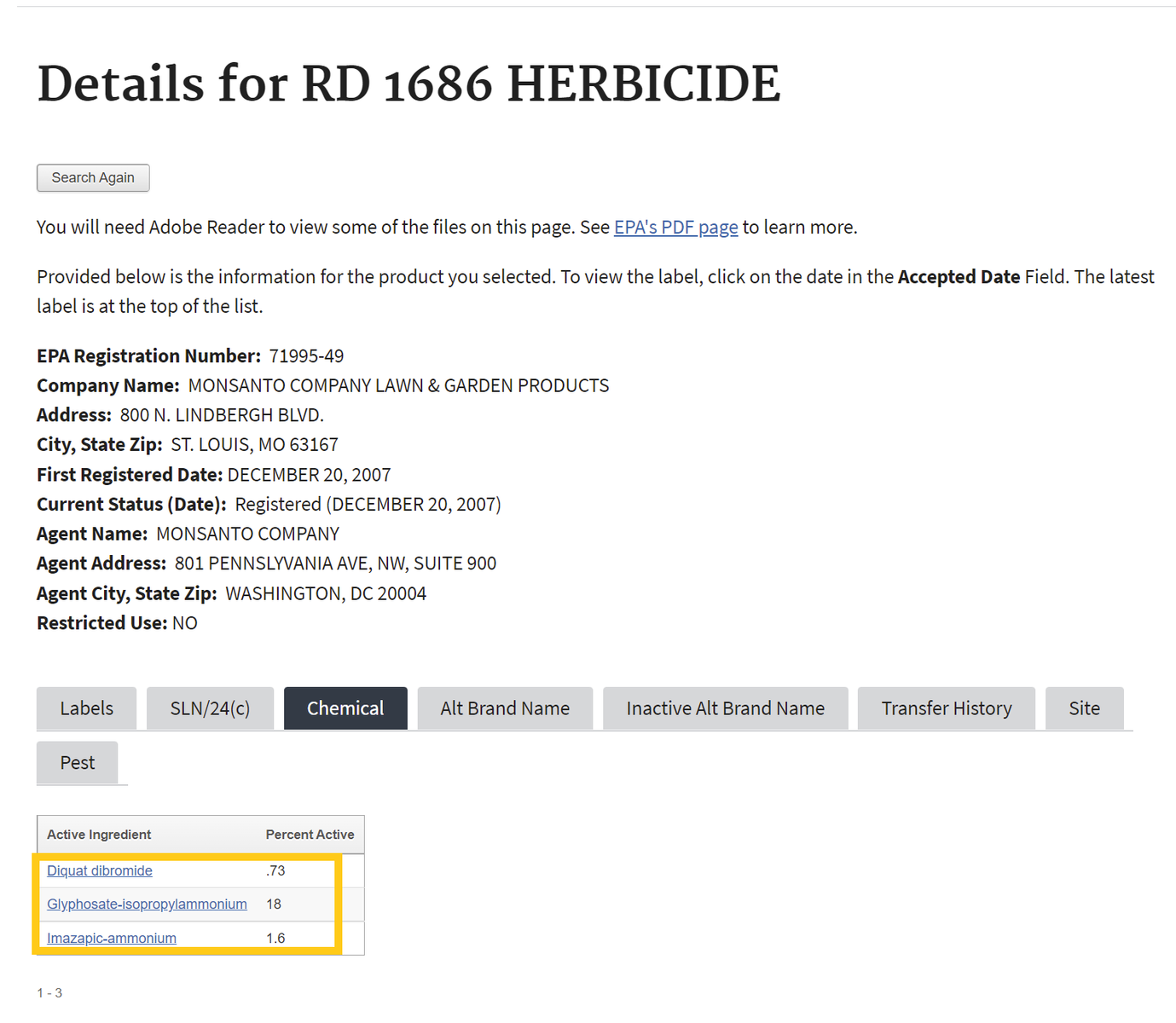
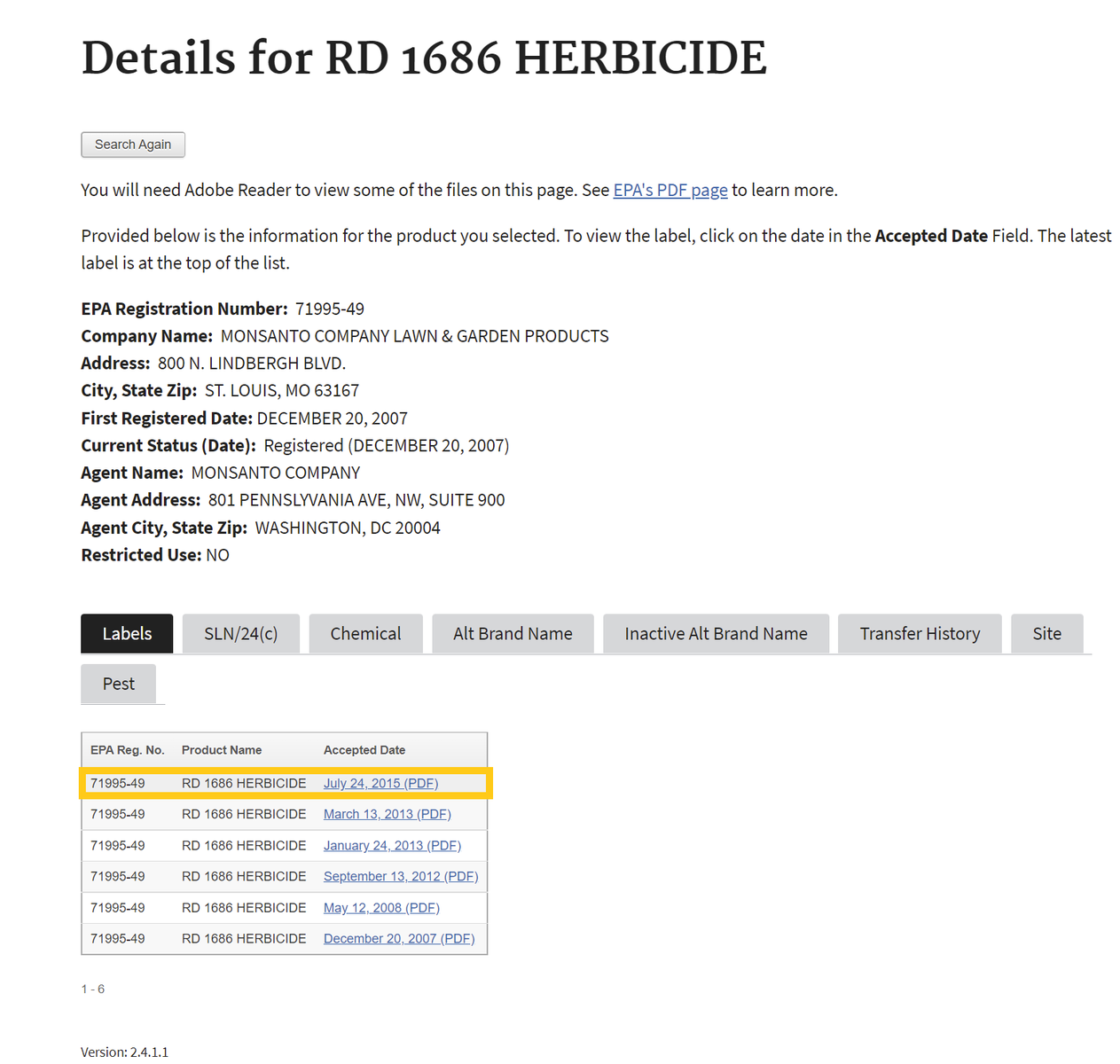
If one selects the chemical ingredients tab, skip to Step 4 . If not, proceed to step number 3 - To find the active ingredient(s) on the label, search for the page in the document containing the date of registration. Usually, the active ingredients section occurs within the first few pages of the label document.
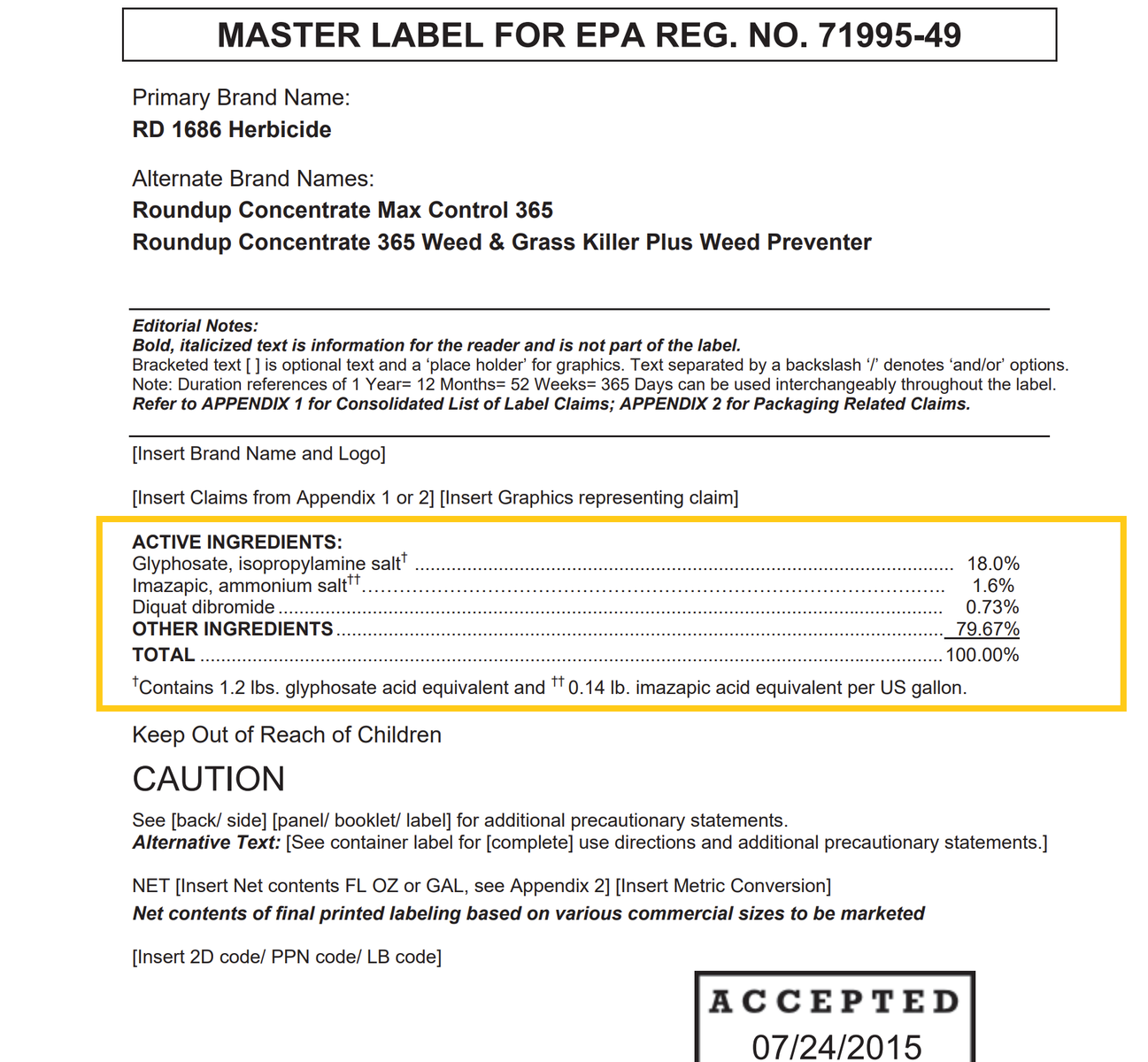
- Return to the Beyond Pesticides Gateway and search for the active ingredient name in the yellow box to the right or from the list below.
Aldicarb
General Information
- Fact Sheet: Aldicarb.pdf
- Product Names:
- Chemical Class: Carbamate Insecticide
- Uses: Control of nematodes, insects, and arachnids in agricultural crops including citrus and potatoes until Dec 31, 2011, and cotton, dry beans, peanuts, pecans, sorghum, soybeans, sugar beets, sugarcane, sweet potatoes, and seed alfalfa, field grown ornamentals, tobacco, and coffee until December 31, 2018.
- Alternatives: Organic agriculture
- Beyond Pesticides rating: Toxic
Health and Environmental Effects
- Cancer: Not documented
- Endocrine Disruption: Yes (36)
- Reproductive Effects: Yes (13)
- Neurotoxicity: Yes (7)
- Kidney/Liver Damage: Not documented
- Sensitizer/ Irritant: Not documented
- Birth/Developmental: Not documented
- Detected in Groundwater: Yes (7)
- Potential Leacher: Yes (7)
- Toxic to Birds: Yes (8)
- Toxic to Fish/Aquatic Organisms: Yes (8)
- Toxic to Bees: Yes (8)
Additional Information
- Regulatory Status:
- EPA and Bayer agreed to terminate all uses of Aldicarb by 2018 because of risks to children and infants found in theRevised Dietary Risk Assessment (8/2010)
- EPA Reregistration Eligibility Decision (RED) signed (9/2007)
- Supporting information:
- Daily News Blog entries (Beyond Pesticides)
- Asthma, Children and Pesticides (Beyond Pesticides)
- NCAP Aldicarb Fact Sheet (Northwest Coaltion for Alternatives to Pesticides)
- Extoxnet Aldicarb Factsheet (Extension Toxicology Network)
- PAN Pesticides Database: Aldicarb (Pesticide Action Network)
- Studies:
- Do Pesticides Affect Learning and Behavior? the neuro-endocrine-immune connection Warren Porter (2004)
- A weight-of-evidence review of colorectal cancer in pesticide applicators: the agricultural health study and other epidemiologic studies.. Alexander DD, Weed DL, Mink PJ, Mitchell ME. 2012. Int Arch Occup Environ Health. 85(7):715-45.
- Exacerbation of symptoms in agricultural pesticide applicators with asthma.. Henneberger PK, Liang X, London SJ, et al.2014. Int Arch Occup Environ Health. 87(4):423-32.
- Hypospadias and residential proximity to pesticide applications.. Carmichael SL, Yang W, Roberts EM, et al. 2013. Pediatrics. 132(5):e1216-26








.png)
